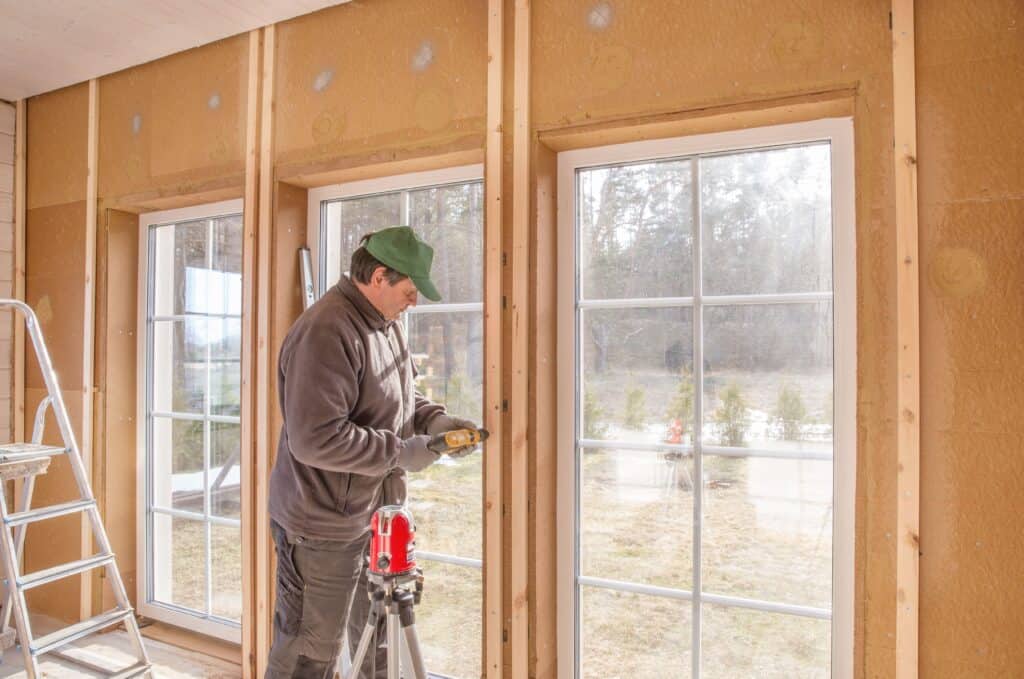Tips for Protecting Your Roof from High Force Wind
It’s that time of year again. Brisk winter winds can sometimes be problematic, especially if combined with freezing rain. Spring brings even windier days and perhaps a thunderstorm to boot. Homeowners need to be mindful of the damage high winds inflict to roofs. While there’s no way to completely protect your home from wind damage, there are a few things you can do to minimize the risk.
Wind Damage to Roofs
The roof of your house is one area that can be vulnerable to wind damage. High-wind speeds often cause bending and creasing, especially near edges or corners where they meet with other surfaces below. This occurs because high force winds don’t hit evenly across any given surface but rather focus in on cracks/loose tiles which lead quickly towards severe damage. Roofs are also susceptible due to falling debris like tree branches. Did you know that wind damage can also affect your attic’s insulation and even lead to costly damages through leaks or falls?
Look for Warning Signs
Try to spot problems before they arise! Torn shingles should be replaced as soon as possible to prevent further damage. If your gutters are clogged with leaves, it could cause water to back up under shingles and loosen the nails that hold them in place. It’s a good idea to have your gutters professionally cleaned at least twice a year. Even small twigs or limbs on the roof can cause serious damage when the wind blows through, so keep your roof clear of anything that could fall onto it during a storm.
Wind Speed
The wind speed is a key factor in determining the extent of roof damage. If winds reach 40 miles per hour, you can expect to see some minor shingle shifting or missing shingles. At 50 miles per hour, it’s possible for wind gusts to cause considerable shifting and lifting of shingles as well as cracking and breaking of the underlayment. At 60 miles per hour, shingles are likely to peel away from the roof along with stripping of the underlying layer of asphalt felt paper. At wind speeds above 70 miles per hour, you can expect to see more widespread damage including tearing off gutters and downspouts, disruption of the roof covering, rusting of fasteners, and tearing away of flashing.
Your Roof’s Pitch
The pitch or steepness of your roof is another factor in determining how much damage can occur with high winds. Hip roofs (have 4 slopes) or other multiple-slope roofs perform best under high wind conditions than gable roofs (2 slopes). A roof with a 30-degree slope has the best results.
Your Roof’s Age
The age of your roof matters when dealing with damage from high winds. Many shingle manufacturers have a warranty that lasts for 25 years from the date of installation. Once your roof reaches its midpoint, you’ll want to keep a close eye on it and be prepared to replace heavily damaged or torn shingles as soon as possible. The best way to do this is by regularly inspecting your roof for loose fasteners, torn shingles, and missing granules.
Other Factors
A few other factors are also important in determining the extent of damage from high winds. Homes with heavy snow on their roofs are more prone to wind damage because additional weight puts extra stress on the roofing materials. High winds may also cause your roof to exert pressure against your home’s walls, which can cause siding to crack and even push your house off of its foundation. Finally, roofs with less than three inches of underlayment are more at risk from wind damage because they have less insulation value.
How and Where to Identify Wind Damage to Your Roof
While it’s vital to be aware of warning signs of roof damage, it’s also important to know where on the roof to look for potential problems. Look along the roof line for loose or torn shingles, cracks in the underlayment, and fasteners that no longer hold tightly. If you notice any of these signs, contact a professional roofing contractor like TruBlue Roofing and Remodeling immediately to check for further damage and close off the affected area before rain can seep in.
Check the roof after storms pass
If you hear strange noises coming from your roof during a windstorm, take a quick walk around your home to make sure everything is secure. If you hear sounds of loose shingles flapping in the wind, check the roof for any other problems caused by high winds.
Call the professionals if needed
While most damage caused by wind can be repaired with some quick fixes, sometimes you should leave it to the experts. If your roof sustains extensive damage during a high wind event, call in professionals who will properly restore your home’s exterior.
For more information about how to deal with high wind damage to your roof or any other exterior repairs, contact TruBlue Roofing and Remodeling today at either our Raleigh location (919) 589-7290 or Wilmington location (910) 319-7249. Our professionals will be glad to help!
Want to learn more about roof repair?
Check out these related blog articles:








